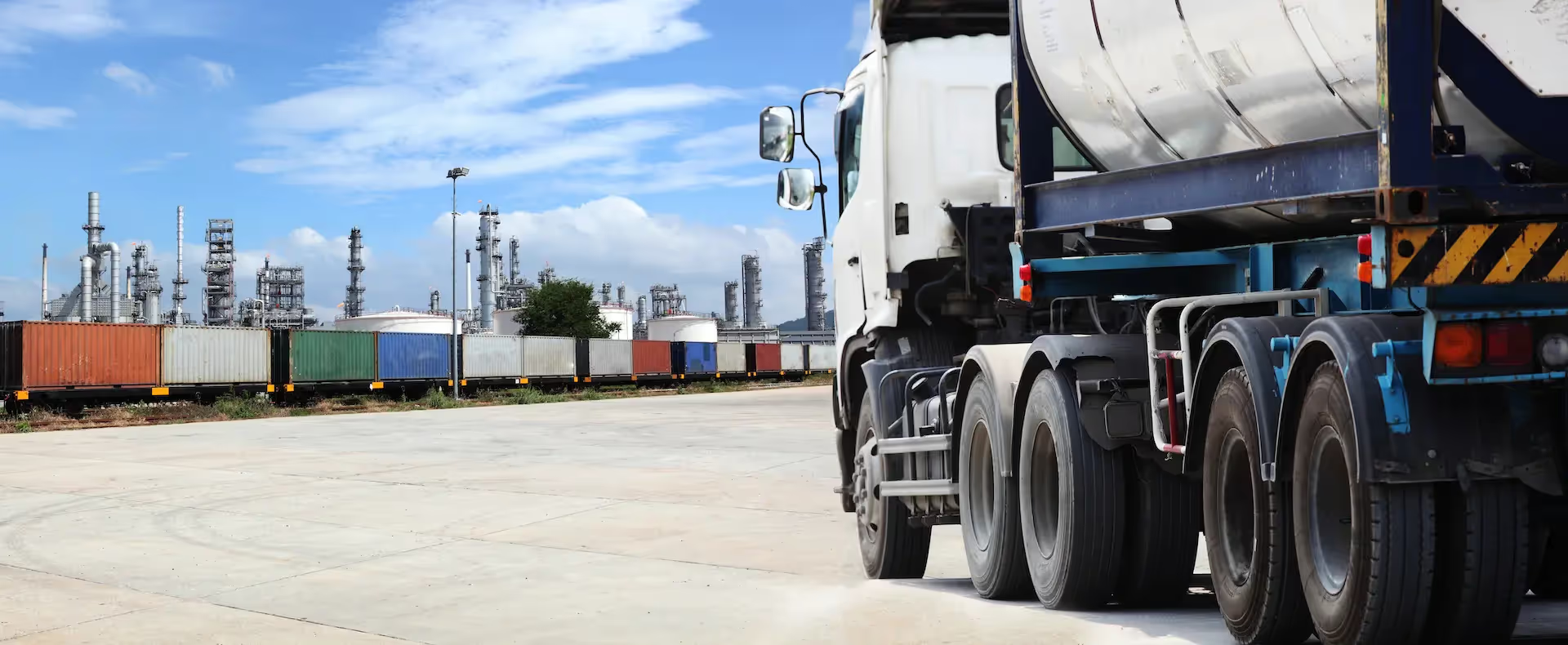Key Points
- Real-time visibility is essential for managing logistics and compliance in the chemicals sector
- It enables proactive risk management by tracking shipments and inventory in volatile markets
- Enhanced visibility identifies bottlenecks and optimizes routes for efficiency
- Real-time data solutions boost resilience and customer trust in the chemicals industry.
Unlike in other industry verticals, the chemical and petrochemical supply chains are not usually linear. They don’t often flow in a straightforward manner from raw material into a finished product. In the chemical sector, common flows are far more complex.

Visibility challenges for chemical sector supply chains
What makes chemical supply chains so complex? Here are some of the reasons (also illustrated in the diagram below):
- While materials flow downstream into finished products, often after many transformation stages, there are certain outputs that go back up the chain to re-enter the transformation process at an earlier stage.
- The segmentation of the delivery patterns to the market through direct sales or through distributors (themselves able to perform certain stages of transformation) is also a complexity that goes beyond what is seen in other industries, since products can be delivered in bulk, semi-bulk or in packed form, either direct to the customer or via a distributor.
- The distinction between hazardous and non-hazardous products at each stage generates specific constraints for the control of logistics and transport operations, depending on the state (gas, liquid or solid) of the product.
- The availability of infrastructure that can deliver intermodal is key. Needing to transport product in bulk or packed (FTL, LTL or parcel) format via vessel, rail, barge or road is specific to the chemical industry, only comparable to certain supply chains of the agro-food industry. When combined with lead-time requirements, this can become very complex.

Complexity results in more visibility use cases for chemicals sector
This complexity is the source of a huge number of use cases for visibility that outnumber the traditional use cases of other industries. Understanding these specific business use cases fully and comprehensively is a key requirement for building a visibility platform.
Creating a visibility tool in this context is by far more sophisticated than in the automotive industry for instance (which has its own complexities in terms of synchronization of flows). There are also specific challenges for mainland road transport, in bulk via containers or tanker/silo trailers, that make it difficult to achieve full visibility.
For instance:
- When a shipment is scheduled, a transport order is made and the booking is confirmed. The physical transport starts effectively at the loading point, However, there is a link between this ordered transport and the previous one via the cleaning certificate. Indeed, compatibility of products loaded or blacklisted products can only be traced via approved cleaning certificates. A visibility platform should be able to attach the certificate to the order.
- In certain instances, once loaded, products transported via container or tank trailer require heating to aid delivery at unloading. This intermediate operation needs to be integrated into the workflow managed by the visibility platform.
- Any use of an intermodal terminal or a roll-on/roll-off terminal with specific booking processes and schedules must be integrated as well.

For chemical products, it is critically important that a visibility solution can handle functionality like:
- Subcontracting of transport loads in FTL and LTL with a traceability down to the actual carrier
- Multi-pick or multi-drop follow-up
- Traceability of cross-docking operations, especially of leftovers in a delivery plan
Real-time visibility requirements for addressing chemicals sector supply chain challenges
Despite all of these visibility challenges for chemical and petrochemical supply chains, technology is available today to unlock greater supply chain value by enabling large-scale deployment of real-time visibility, featuring highly reliable ETA solutions.
However, to overcome the challenges mentioned, visibility solutions must include some key requirements:
- A total independence vis-à-vis the costing/pricing of the transport operations which must remain in the control of each chemical company and its selected logistics providers.
- More flexibility to avoid needing to define all stakeholders, and their needs, upfront. As discussed above, the platform must be able to integrate sophisticated use cases based on evolving supplier and customer needs.
- More scalability to enable a robust network. This network of chemical producers, distributors and solutions providers should be opened to each new customer as expansion will add value to all members of the overall network, creating a virtuous circle.
- More portability from legacy to next-generation technologies, safeguarding future possibilities. This is not specific to the chemical industry, but a visibility platform must be able to evolve as fast as technology itself to give access to the best visibility tools.
In a recent study on visibility, an analyst suggests that achieving best in class visibility of your operations requires the focus and the resources of a specialized and truly independent actor. They offer further examples of value that can be unlocked:
- Better and clearer view on delivery performance shared in an unequivocal way, better reporting and better selection of potential providers
- Improved service providers management covering all aspects of safety, quality and delivery performance
- Better control over certain specs in related activities such as cleaning, cross-docking and subcontracting
- Better and deeper analysis of the root causes of incidents in the supply-chain execution with a much larger set of data
- Better on-site efficiency, ability to develop a large-scale self-loading approach
- Remarkable progress and savings in troubleshooting activities
- Better control over extra costs
- Further enhancements to inventory management
For more information, download our full white paper 'The complex visibility needs of the chemicals industry's supply chains' or get in touch with one of our specialists today.
Latest blogs & product releases.
Authors







